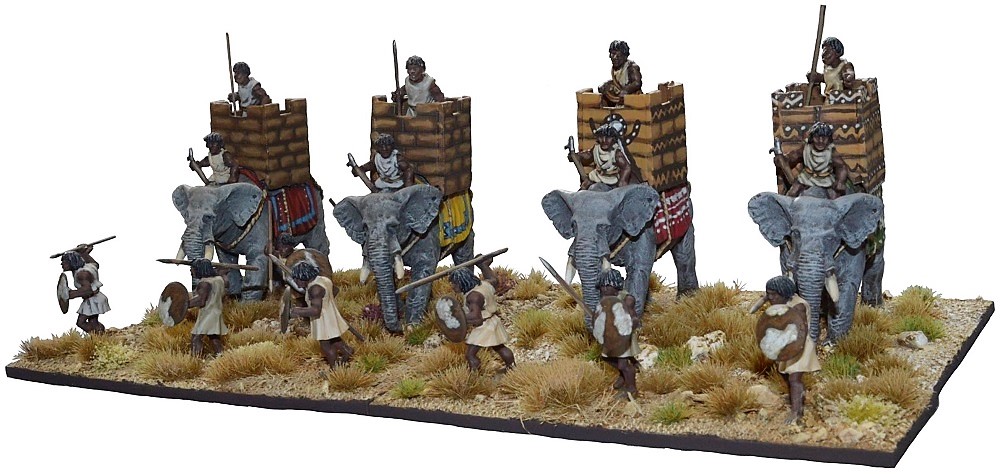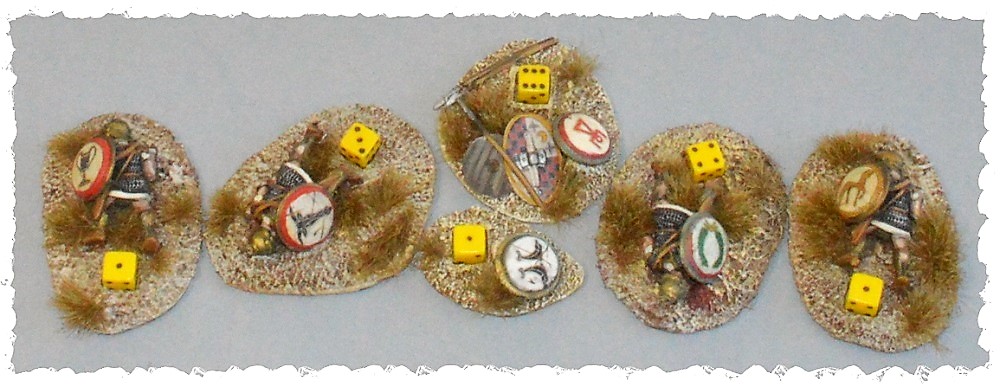

Over the past five years I have slowly been adding to my 28mm Carthaginian army. Originally this army was only ever meant to contain enough elements to meet the minimum game requirements for a rule system called Basic Impetus. Freely down loadable, BI was a simplified version of full Impetus, which introduced new players to the main game mechanics of the full rule system. While I loved BI, full Impetus at the time was a step to far for me. However, second edition (full Impetus) is a different beast altogether and my armies have now grown to accommodate this revamped version of the rules. Up until now I have simply posted army updates to this page after finishing extra units. With the advent of new command stands and an extra cavalry element I’ve finally decided to give this page a complete makeover.
I hope you enjoy it.
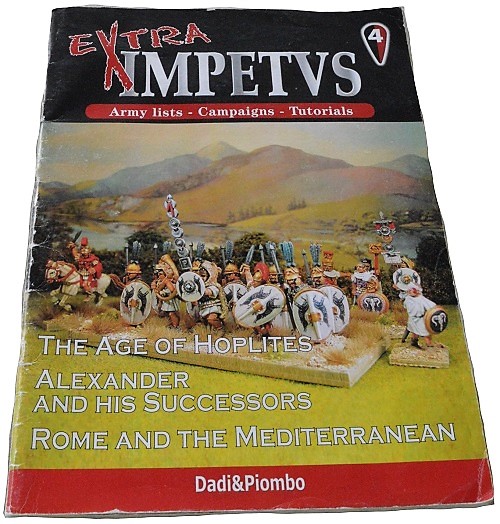
Heavy Infantry
The Libyan spearmen pictured here contain a mixture of Armorum & Aquila miniatures and Crusader figure packs. Mark Sims sculpted both of these ranges so they are very similar in style and pose. They mix well on the same bases although to my eye the A&A figures appear slightly more chunky than their Crusader counterparts.
Based according to the suggested guide lines in the rule book. These troops are mounted on a laser cut 120/60/3mm plywood base. Although I have placed sixteen figures on each element here, there are no hard and fast rules pertaining to how many figures must be on each base.
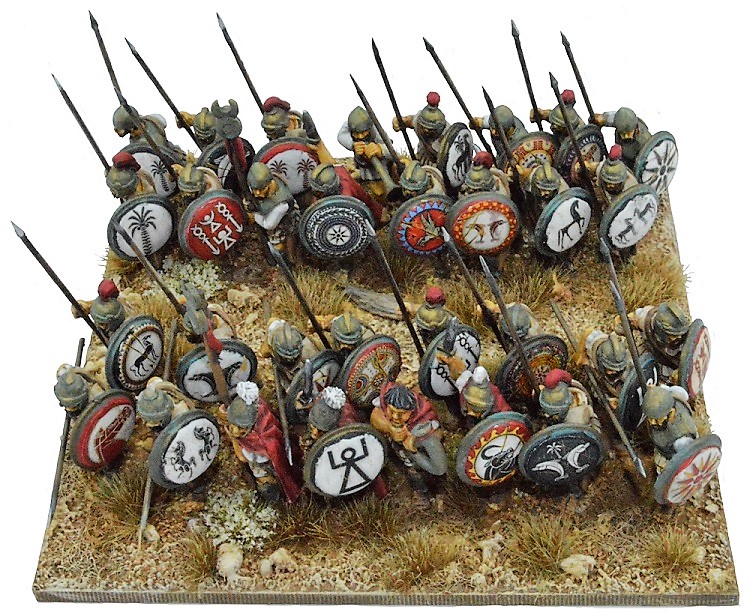
One of the great things (I believe) about Impetus is the large base size of each unit. What with the ever-increasing dimensions of the models in new figure ranges (25-28-32mm) these days it is getting harder and harder to match the basing requirements of some of the older more stringent rule systems. Impetus lets you place any number of models onto a base as figure density has no bearing on the game mechanics at all.
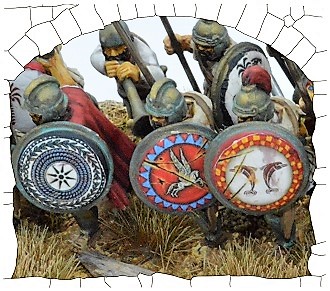
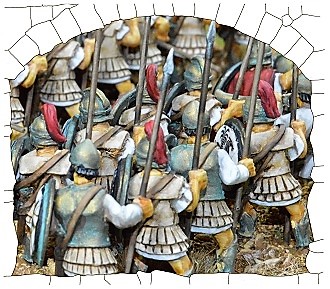
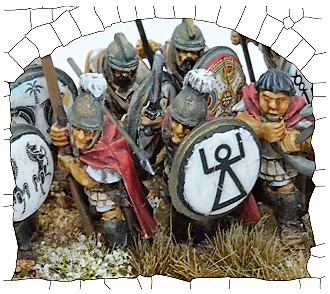
Based on troops that fought in the second Punic war the list I’m building his army around allows Libyan spearmen to take the field in two different formations. Namely a single standard element formation like the unit of veteran spear-men pictured to the right or in a large double element formation like those pictured at the top of the page. The deeper formation gives spearmen some great combat bonuses, but it is at the cost of narrowing the over all frontage of the army when deployed in this manner.
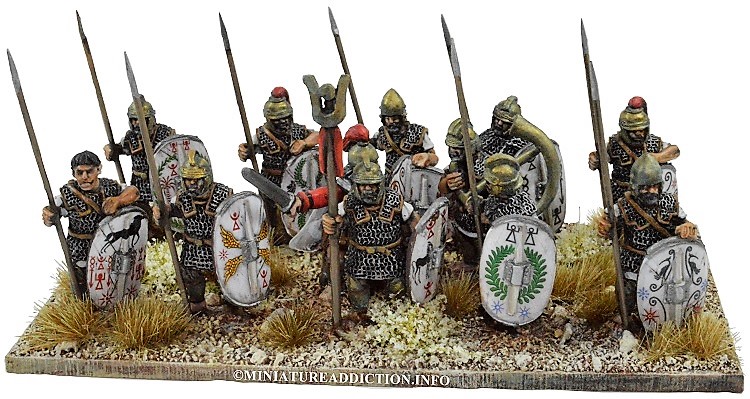
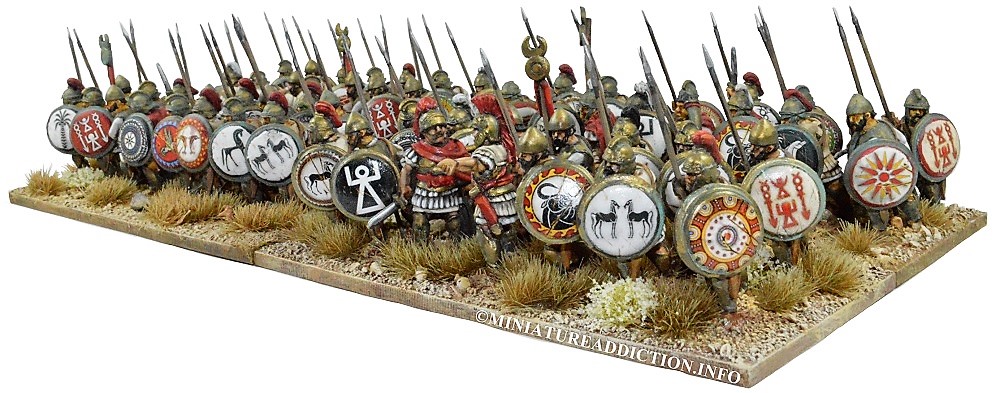
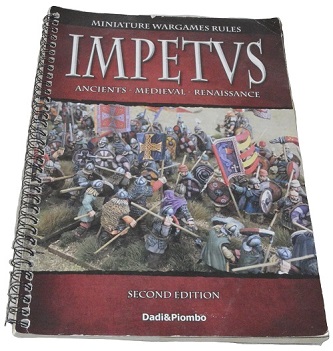
Army commanders
One of the changes I do like in second edition is the individual representation of commanders on the table top. No longer confined to just one unit for the duration of the battle they are now free to move about the field as needed. This army contains two sub-commanders pictured here alongside their C-in-C. Like many other rule systems these commanders are assigned an ability rating, which can range from incompetent to genius. Correspondingly, these ratings imply different command ranges along with morale and combat benefits. Extra points can also be spent adding beneficial traits to commanders who are not made of poorer stock. My sub-commanders are mounted on 60mm bases while the C-in-C stand is 75mm round. Base shape and size is more or less irrelevant here as all measurements are made from the commander’s head not the edge of his base.
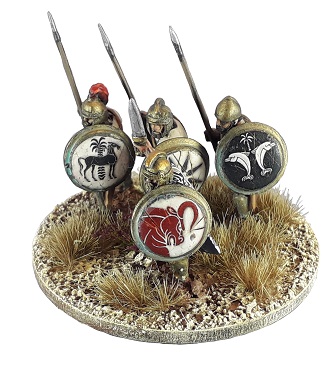
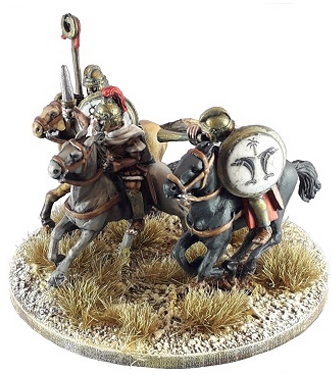
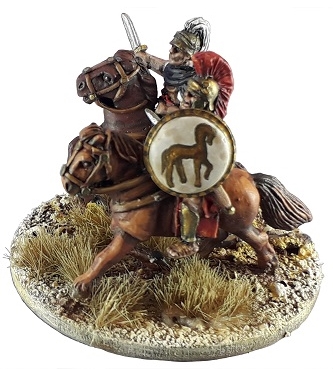
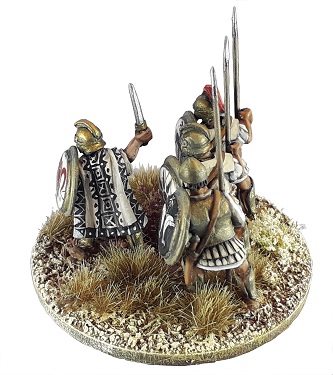
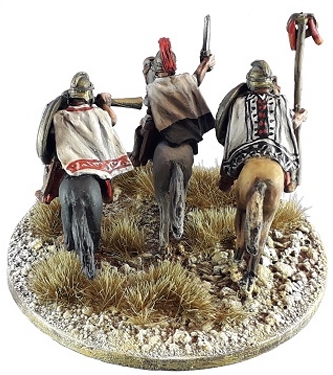
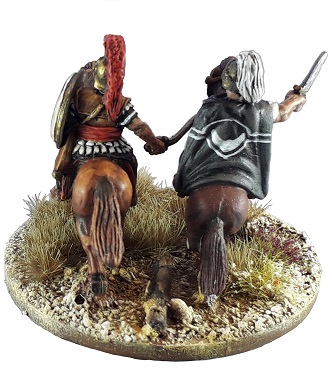
Carthaginian Cavalry
Citizen cavalry at this time were recruited from the nobility and rarely served over seas. At Cannae for example only Spaniards, Gallic and Numidian cavalry are mentioned. Although I have Spanish cavalry in my collection I prefer to use (purely for ascetic reasons) Carthaginian models when fielding this army. Not the most effective troop type in armies of this period, as they lacked the hitting power to break up well placed heavy foot.
Like the rest of this army these medium cavalry units contain a mixture of pewter figures produced by both Crusader and A&A miniatures. While I did hand paint a couple of shield patterns in this army most are Little-Big-Man transfers. A keen eye will notice that one of the cavalry elements has an extra horseman. This was to help identify it as a command stand in the first iteration of Impetus.
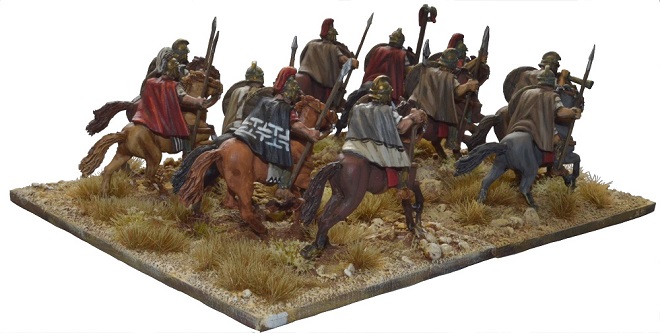
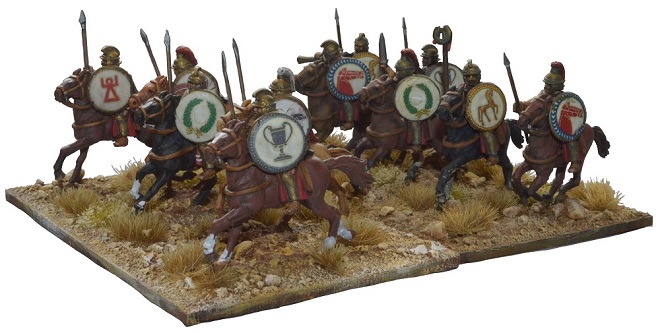
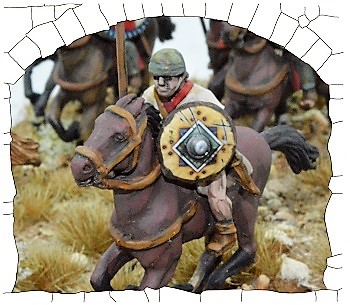
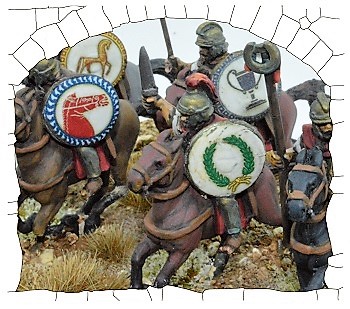
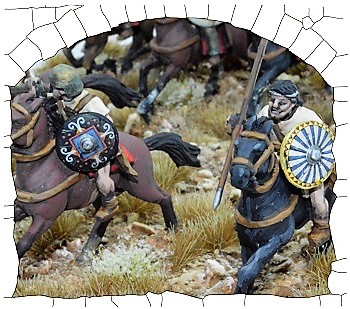
Light Cavalry List Options
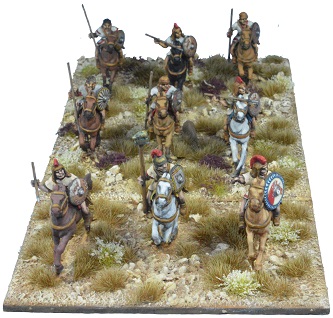
Limited amounts of Iberian/ Tarentine and Numidian light cavalry units are included in the list options for this army. The latter of the three being the better, but more expensive choice here. Equipped with javelins these fast moving troops are ideal for harassing the enemies flanks. Currently, I don’t possess any Tarentine units but, both Numidian and Iberian units can be viewed in more detail else where on this site.
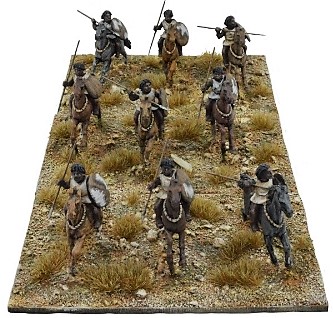

Impetuous Gallic Warriors
These colourful warriors can be classified as either light or heavy infantry and can contain a limited amount of veteran stands. Light troops navigate difficult ground better while heavy infantry are more resilient to enemy missile fire and cavalry. War-bands (like Libyan spear-men) can be fielded as individual stands or as large double element units. Both options have positive and negative points about them, but I will refrain from offering any tactical advice here as I lose more games than I win. For a closer look at troop stats, combat examples or Impetus in general just click the buttons below.
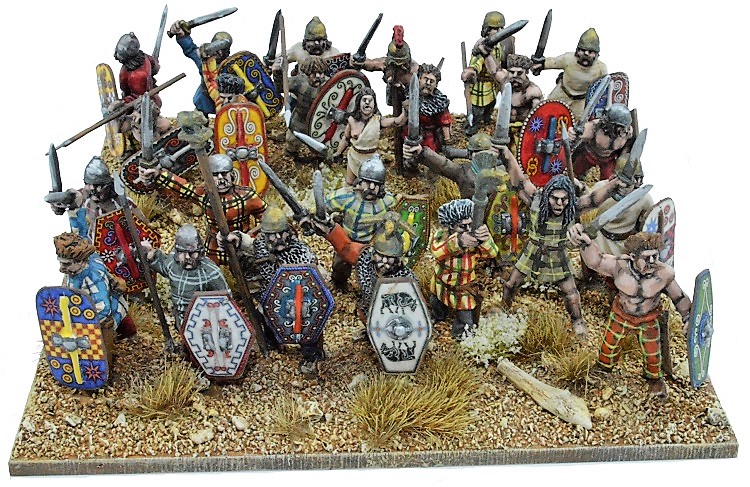
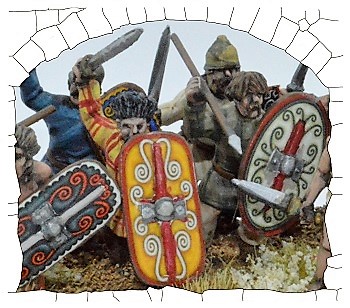
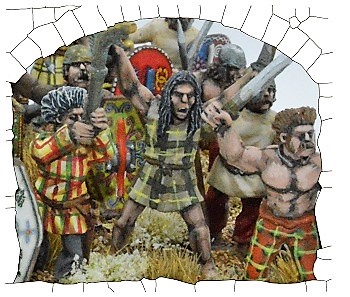

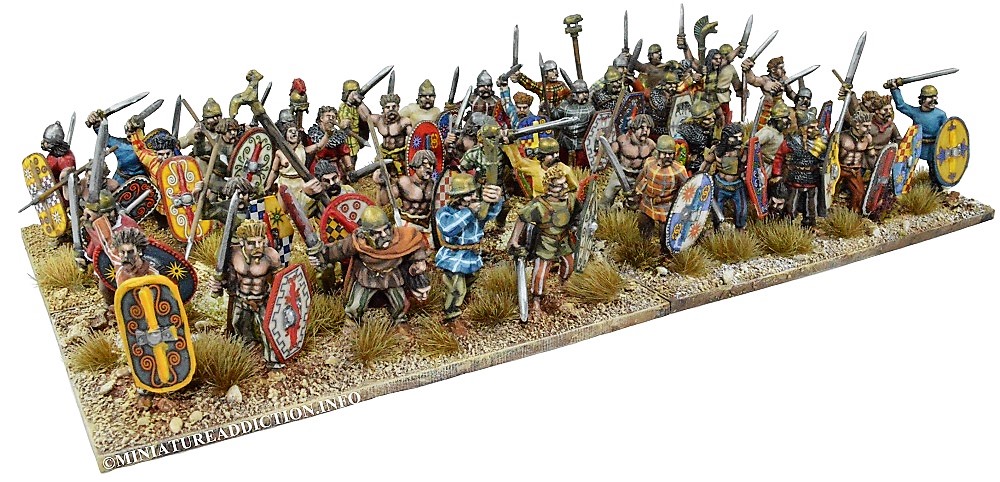

Light troop and Skirmishers
There is a raft of light troop options in the Carthaginian army list. Most of which are either armed with javelins or slings. Pictured above are some Libyan skirmishers while to the right are some Numidian javelin men followed by some Spanish Scutarii. One advantage of building multiple Punic war armies is that a large number of unit types are freely interchangeable between the different armies. The Balearic slingers on my Republic Roman page and the Spanish Caetrati from the Celtiberian page are good examples of this.
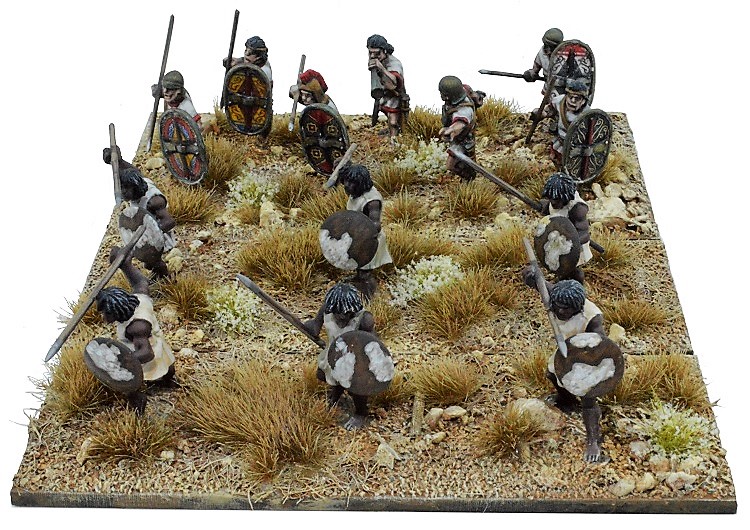
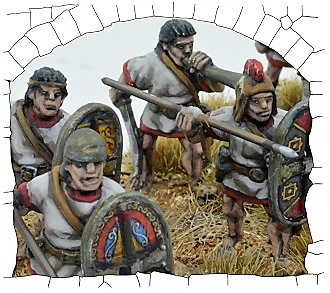
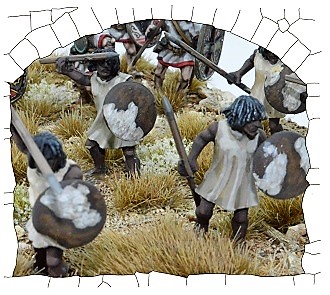
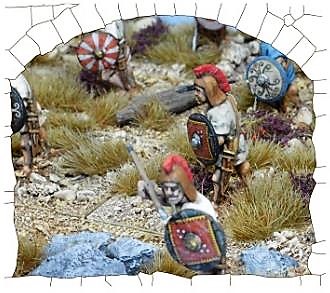
Elephants & Casualties
The elephants pictured here are from the War-games Foundry range. I like the smaller size of these model compared to others currently on the market. Both elements are crewed by Numidians at present. This is mainly because I don’t currently have any Carthaginian crewmen to place in the howdahs. The casualty figures are from Armorum & Aquila miniatures.
